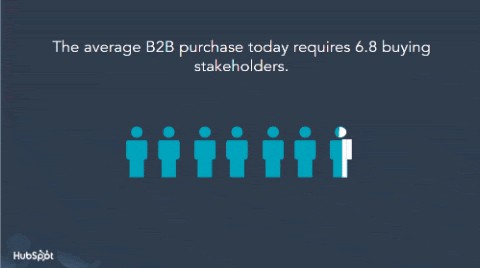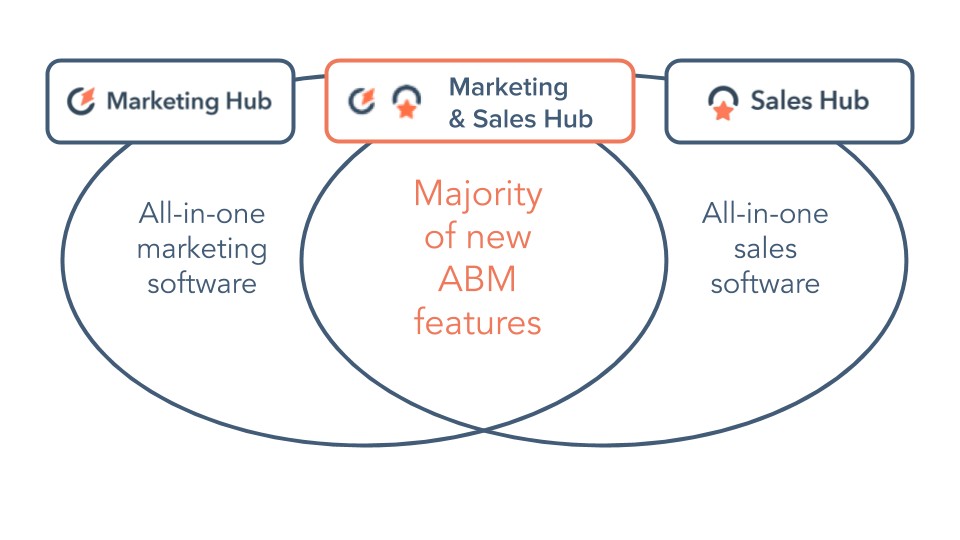Before my kids woke up this morning, I had ordered groceries for the week, subscribed to a digital news channel I've been meaning to read more, and signed up for an online workout class (that I'm likely to skip). All from my phone, and all with just a few clicks.
The purchase process for each was personal, quick, and easy — something I've come to expect from all my service providers.
It's 2020 after all, and delivering an exceptional customer experience is the key to success. In recent years we've seen consumers flock to the companies that offer the best customer experience.
These 'experience disruptors' have driven customer expectations to new heights, and in doing so, have raised the customer experience bar for business across all industries.
But if the importance of customer experience seems obvious to us as consumers, it begs the question: why is the buying experience for B2B companies still so bad?
According to a CEB poll, the words B2B decision-makers associate with their buying experience include "hard, awful, painful, and minefield."
It's a process that's years behind the seamless B2C experiences we now expect. And when we look at high-value B2B deals — with longer sales cycles, more decision-makers, and stiffer competition — the experience seems decades behind the times.
How do we explain this? Aren't B2B marketers aware of the importance of customer experience? Don't salespeople have unbridled access to a supply of software tools that are supposed to help with this? And weren't they all promised that ABM would solve this problem?
They were, but it wouldn't be the first time enterprise software has left marketers and salespeople wanting.
Understanding ABM
ABM has long been heralded as a silver bullet for delivering personalized, contextual buying experiences for businesses, but many marketers and salespeople are still waiting to see the benefits.
Misconceptions about those three simple letters have taken hold in the market, giving rise to three myths that to this day hold companies back from putting a successful strategy in place.
At HubSpot, we're on a mission to debunk those myths.
Myth #1: ABM is Exclusively for Marketers
Perhaps the most commonly held misconception about ABM is that it is a strategy for marketers alone.
Many businesses are sold ABM solutions with the assurance it'll enable them to deliver B2C buying experiences to B2B companies, but in practice, the products often amount to little more than a set of advertising tools that allow marketers to slightly improve their targeting.
And while that can drive brand awareness among high-value accounts, it isn't much help to the salespeople that are responsible for delivering an exceptional buying experience at later stages of the sales cycle.
To truly deliver a seamless B2B experience across the entire buyer's journey, marketers and salespeople have to be equally invested in an ABM strategy from the get-go, and have a centralized system of record.
As General Manager of HubSpot's Sales Hub, I've seen the importance of this first-hand. If marketers launch an ABM strategy in isolation, their colleagues in sales will quickly find themselves on the backfoot, scrambling to react to the new types of leads landing in their laps.
Similarly, if salespeople are the first to reach out to new contacts at a target account, marketers will be jolted into reactive mode and rushed into creating content and messaging to support the nurturing process.
Successful ABM strategies are rooted in transparency and trust across marketing and sales. There shouldn't be hidden tools where marketing campaigns are born, nor secret spreadsheets where salespeople do their bidding — both teams should be looking at the same data, all of the time.
Achieving alignment is challenging at the best times, but when companies have to wrangle two separate systems across their sales and marketing organizations to simply access the most recent communication with an account, the task is virtually impossible.
A system of record is the foundation of sales and marketing alignment — it enables marketers and salespeople to build a common understanding of high-value targets, what success looks like, and how to hold each other accountable as they work together to make their ABM strategy a success.
Myth #2: ABM is for Big Companies Only
The second myth about account-based marketing builds on the first. With the explosion of technology solutions in recent years, there are now more players than ever in the space. But for many, ABM still implies heavy spending on advertising, which can sometimes make it feel like an approach reserved for large companies with big teams and bigger budgets.
The truth, however, is that companies of any size can get started with ABM.
There are now new tools arriving on the market that are affordable, easy to set up, and easy to use — with HubSpot, for example, businesses can get started with ABM for free. There is also mounting pressure on enterprise software providers to improve the accessibility and usability of their products.
For too long, the tools needed to run sophisticated campaigns have been so prohibitively painful to use that growing companies have been prevented from experiencing their benefits. This is finally changing, and marketers and salespeople can now approach ABM with confidence, regardless of the size of their team or depth of their budget.
Myth #3: ABM Can't Coexist with Inbound Marketing
Another myth that has held countless companies back from getting started with ABM is the belief that it is incompatible with inbound marketing. Fundamentally, both inbound marketing and account-based marketing are remarkably similar.
In essence, they're both about matching sales and marketing strategies to how prospective customers want to buy, and in many iterations, the same channels — and even the same content — can be used in both approaches.
Where inbound marketing attracts a wide range of interested consumers by providing helpful content, ABM helps businesses to offer a more targeted, personalized approach when delivering value. And when used together in the same organization, the two approaches become greater than the sum of their parts.
A well-executed inbound marketing strategy not only helps to deliver value to a broad audience, it organically surfaces high-value accounts that are naturally suited to an ABM strategy. And from there, marketers and salespeople can use their inbound assets to drive more targeted, personal interactions with those accounts.
The myths that ABM is exclusively for marketers, only accessible to companies with big budgets, and incompatible with inbound marketing tactics have deprived companies of its benefits for too long.
And at a time when working on high-value B2B deals is only growing more complex, it's increasingly important that businesses are given the opportunity to make use of ABM's full potential.
On average, there are 6.8 decision-makers involved in the B2B purchase process — an increase of 25% in just the last few years. Each of these people brings their own preferences, passions, and pet rocks to the table across the entire buying process, making it harder than ever to deliver a buying experience that's consistent, contextual, and compelling.

But with ABM tools that are powerful and easy-to-use, shared across a centralized system of record, and used alongside an inbound marketing strategy, marketers and salespeople can work together to overcome this complexity and deliver B2B buying experiences that can turn losses into wins.
Introducing HubSpot ABM
At HubSpot, we believe that ABM has become unnecessarily confusing and high-minded, prohibiting companies from even taking the first step. As one analyst put it, “the rapid and continued adoption of ABM programs will require significant investment in technology, media, data, and employees.”
It doesn't have to be this way.
ABM should feel natural for every business, not like a special one-off campaign or like getting a PhD in Economics. It should be powerful, but also easy.
And it should be accessible to any company seeking to deliver positive B2B buying experiences.
That's why we've launched a brand new set of ABM tools built natively into HubSpot, complete with shared sales and marketing features that are designed to empower companies to set up and execute an account-based strategy with ease.
Uniting Teams, Unlocking Potential
HubSpot's new ABM offering includes tools that allow companies to get started quickly, including AI-powered target account recommendations, advanced company scoring, and user-friendly campaign templates.
And once up and running, sales and marketing teams can gain a unified view of target accounts, real-time reports, and the most recent communication with each contact at a company, giving them an all-important centralized system of record. This is what makes HubSpot's ABM offering unique in today's market, and is what can fuel the sales and marketing alignment necessary to deliver positive buying experiences for businesses.

HubSpot ABM Packaging (May 2020)
As important as the ABM features we've built are the features we've chosen not to build. That's where our rich ecosystem of app and strategic partners comes into play.
In HubSpot's App Marketplace, companies can leverage tools like LinkedIn for advanced ad targeting, Bombora for company-intent insights, Engagio for multi-channel ABM automation, and Supermetrics or Demand Sage for deep ABM reporting. And with a newly enhanced Slack integration, teams can collaborate more closely as they work on high-value target accounts.
The updated integration now allows users to create Slack channels named after specific deals and accounts, easily share important KPIs, and add notes to deal and company records from Slack and vice-versa — all in the name of making it as easy as it should be for marketers and salespeople to move quickly in tandem as they unlock the potential of ABM.
Bringing B2C Buying Experiences to the B2B World
As consumers continue to benefit from the seamless buying experiences that are now standard across the B2C world, more and more B2B buyers are demanding the same.
At HubSpot, we've always believed that businesses that match the way they sell to the way customers want to buy will grow better. This principle applies whether it's selling on-demand grocery delivery to an individual like me, or selling high-value services to large global enterprises.
With Sales Hub, Marketing Hub, and the array of new ABM tools that are shared across both, companies can launch account-based marketing strategies with ease, overcome the challenge of sales and marketing misalignment with a centralized system of record, and be empowered to deliver a seamless B2B buying experience to their most high-value target accounts.
ABM was supposed to fix the broken B2B buying experience. Now it can.
